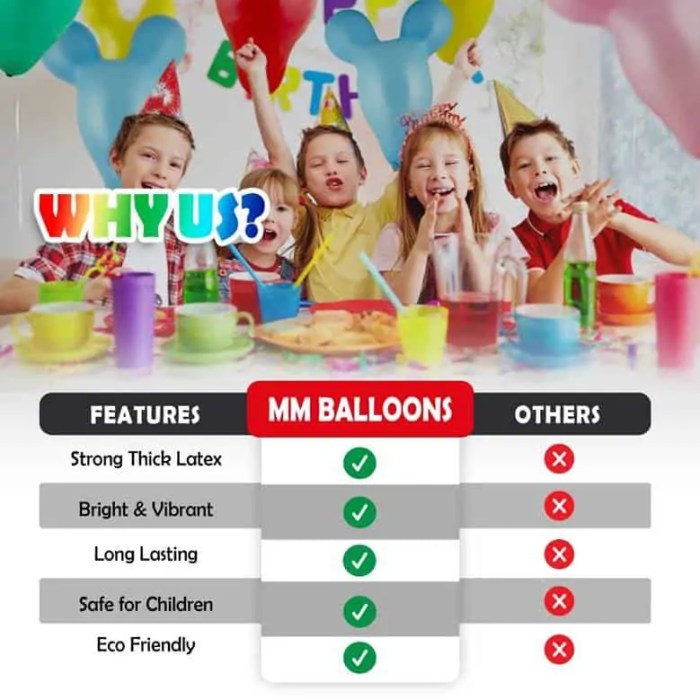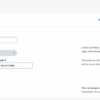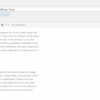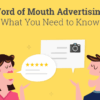Amazon advertising performance difference between brand generated images and Shutterstock images is a crucial area to explore for optimizing your campaigns. This comparison dives deep into the impact of using either in-house creations or stock photos on key metrics like click-through rates, conversion rates, and cost per click. We’ll examine the factors influencing these differences, from brand recognition and visual appeal to target audience relevance and image quality.
Beyond the immediate performance, we’ll also consider the long-term implications for brand identity and customer trust.
The exploration covers cost and time considerations, comparing the financial and time investments required for brand-generated versus Shutterstock images. We’ll also examine image quality, targeting strategies, and the importance of optimization. Finally, we’ll delve into creative approaches, considering how to leverage both image types to maximize impact and engagement.
Image Origin and Performance
Image creation for Amazon advertisements is a critical aspect of campaign success. Choosing the right image source can significantly impact ad performance, influencing click-through rates, conversion rates, and overall return on investment. This analysis delves into the performance differences between using brand-generated images and those sourced from stock photo platforms like Shutterstock.Understanding the nuances of image origin is essential for optimizing ad strategies.
Ultimately, the optimal choice depends on a careful evaluation of several factors, including brand identity, target audience, and budget constraints. This discussion will explore the performance metrics, influencing factors, and long-term implications of each approach.
Brand-Generated vs. Shutterstock Images: Performance Metrics
A direct comparison of ad performance metrics is crucial to determine the optimal image source. This analysis will compare click-through rates (CTR), conversion rates (CR), and cost-per-click (CPC) between ads utilizing brand-generated images and those featuring images from Shutterstock. A hypothetical example: Brand A ran two identical ad campaigns, one using brand-generated images and the other featuring Shutterstock images.
Campaign A (brand-generated) yielded a CTR of 2.5%, a CR of 1%, and a CPC of $0.50. Campaign B (Shutterstock) saw a CTR of 1.8%, a CR of 0.8%, and a CPC of $0.60.
Factors Influencing Ad Performance Differences
Several factors influence the performance disparity between brand-generated and Shutterstock images. Brand recognition, visual appeal, target audience relevance, and image quality all play significant roles.
- Brand Recognition: Brand-generated images often leverage brand identity and visual consistency. Familiar brand elements can boost recognition and trust. For instance, a recognizable logo or color scheme in a brand-generated image can evoke stronger brand associations compared to a stock image that might not align with the brand’s identity.
- Visual Appeal and Target Audience Relevance: Brand-generated images can be tailored to resonate with the specific target audience. Images that accurately reflect the target audience’s interests and preferences are more likely to attract clicks and conversions. Shutterstock images, while diverse, might not always perfectly align with the nuanced needs of a particular target audience.
- Image Quality: Brand-generated images can be meticulously crafted to meet specific creative and visual requirements. This control over quality ensures a consistent visual standard across all ads. In contrast, the quality of Shutterstock images can vary significantly. Images may need adjustments to maintain brand consistency and avoid discrepancies in visual quality across campaigns.
Copyright Infringement Concerns
Copyright infringement can severely impact ad performance. Using copyrighted images without permission can lead to legal action and ad suspensions.
I’ve been experimenting with Amazon advertising lately, comparing the performance of brand-generated images versus those from Shutterstock. It’s interesting to see the different results, but the recent setback for the WordPress Foundation in their trademark application wordpress foundation suffers setback in trademark application has got me thinking about brand consistency and its impact on visual representation. Ultimately, the quality and originality of the images used in my Amazon campaigns could significantly impact conversion rates, regardless of the source.
- Avoiding Copyright Infringement: Carefully review Shutterstock’s usage rights before incorporating an image into an ad campaign. Utilize the appropriate licensing agreements and ensure proper attribution where required. Using original images or images from a royalty-free platform is a more secure approach.
Impact on Customer Trust and Brand Perception
The origin of an image can significantly influence customer trust and brand perception.
- Customer Trust: Authenticity and originality play a significant role in fostering customer trust. Brand-generated images, reflecting the brand’s genuine values and aesthetic, often build a stronger sense of trust. Customers might perceive images from stock platforms as less authentic or less tailored to their needs.
- Brand Perception: Consistency in image style and quality is crucial for building a cohesive brand perception. Brand-generated images allow for tighter control over this consistency, which contributes to a stronger and more recognizable brand identity. If images from Shutterstock do not match the brand’s overall style, this inconsistency can weaken brand perception.
Long-Term Impact on Brand Identity
Image sourcing strategies significantly affect a brand’s long-term identity.
- Sustained Effectiveness: A consistent approach to image sourcing contributes to a unified brand identity. Using brand-generated images allows for greater control over brand messaging and visual consistency, creating a recognizable and reliable brand experience over time. A sustained strategy of using brand-generated images fosters brand loyalty and recognition, crucial for long-term effectiveness.
Cost and Time Considerations
Choosing between brand-generated images and stock photos like those from Shutterstock hinges heavily on cost and time investment. While brand-generated assets often offer a unique visual identity, they can be more resource-intensive. Conversely, stock photos provide immediate access to diverse imagery but might not perfectly align with your brand aesthetic. A thorough cost-benefit analysis is crucial for making the right decision.
I’ve been curious about the Amazon ad performance gap between using your own brand images versus stock photos like those from Shutterstock. A good digital marketing professional services agency like digital marketing professional services can definitely help you figure out the best strategy. Ultimately, the winning image choice depends heavily on factors like your target audience and the specific product being advertised, impacting the overall effectiveness of your Amazon campaigns.
Cost Comparison
The cost of brand-generated images involves more than just the initial creation. Production costs encompass design software subscriptions, photographer fees (if applicable), and potentially the time spent by in-house designers or external freelancers. Licensing fees for Shutterstock, on the other hand, are typically upfront, although royalty-free options often provide a predictable cost structure. Furthermore, factors like image resolution, editing, and revisions impact the overall cost of brand-generated assets.
Time Investment
Creating an image internally can be time-consuming, especially if complex designs or multiple revisions are involved. A simple graphic might take a few hours, while a complex product image or a photoshoot could stretch into several days or even weeks. Finding and selecting a suitable stock photo from Shutterstock, however, is significantly faster. Efficient workflows involve using specific s, filtering options, and preview tools to quickly narrow down the selection.
For example, a designer could identify and download an appropriate image in under an hour, compared to the several days or weeks needed for a complex in-house production.
Cost-Benefit Analysis
| Approach | Cost | Time | Potential Return ||—|—|—|—|| Brand-Generated Images | High (design software, photographer fees, potential outsourcing) | High (depending on complexity) | High (strong brand consistency, unique visuals) || Shutterstock Images | Moderate (licensing fees) | Low (quick selection, download) | Moderate (depends on image quality and suitability for campaign) |
Shutterstock Licensing Options
- Royalty-Free: This option typically offers the lowest upfront cost and a straightforward licensing process. The image can be used for multiple projects without further fees. However, usage rights may be limited to a specific number of prints or displays, and some commercial uses may require an additional license.
- Rights-Managed: This type of licensing provides more control over usage. You pay a higher upfront cost, but the usage rights are tailored to your needs (e.g., specific number of printings, duration of use, geographical restrictions). This offers greater flexibility for diverse campaigns and usage scenarios. This option may be more expensive but allows for longer-term, more targeted use.
Advantages and Disadvantages
- Brand-Generated Images:
- Advantages: Unique brand identity, greater creative control, higher potential for brand consistency.
- Disadvantages: Higher cost, longer production time, requires in-house expertise or external resources.
- Shutterstock Images:
- Advantages: Faster turnaround time, lower initial cost (for royalty-free), wider variety of styles and subjects.
- Disadvantages: Potential for brand inconsistencies, less control over creative direction, may not perfectly align with your specific needs.
Image Quality and Targeting
Brand-generated images often offer a consistent aesthetic and precise color representation, aligning perfectly with your brand identity. However, they can be time-consuming to produce, especially for frequent campaigns. Shutterstock, on the other hand, provides a vast library of diverse images, often at a faster turnaround time. The key is understanding how to leverage both resources effectively for optimal Amazon advertising performance.Choosing the right images significantly impacts your campaign’s effectiveness.
The visual appeal of your ads directly influences consumer engagement, and the quality of your images is paramount in attracting and retaining customer attention. This section explores the nuances of image quality, brand consistency, targeting strategies, and optimization techniques to maximize your Amazon ad performance.
Visual Quality Comparison
Brand-generated images offer precise control over color accuracy and aesthetic alignment with your brand’s identity. They typically maintain high resolution, enabling intricate details to be showcased effectively. Shutterstock images, while often high-quality, can sometimes exhibit variations in color accuracy and resolution depending on the specific image. Consider factors like the image’s intended use and scale when selecting images from stock libraries.
For instance, a high-resolution image for a product detail page will differ in requirements from an image for a short-term promotional campaign.
Brand Consistency Strategies
Maintaining brand consistency across your Amazon advertising campaigns is critical. Employing a consistent color palette, typography, and overall design aesthetic ensures a recognizable and trustworthy brand experience. When utilizing images from Shutterstock, implement strategies like watermarking or subtle design adjustments to maintain your brand identity. Watermarking your logo or brand color subtly on the image or making small modifications to the color scheme or composition of the image can ensure that the image aligns with your brand’s identity.
Targeting Strategies for Different Audiences
Understanding your target audience is crucial for crafting compelling and effective Amazon ads. Different audiences respond to varying visual styles. For instance, a minimalist design might resonate with a sophisticated audience, while a more realistic approach might appeal to a broader audience. For niche audiences, images should reflect their specific interests and preferences. For example, if you’re targeting eco-conscious consumers, images showcasing sustainable packaging or eco-friendly features are highly relevant.
Image Style and Ad Performance
The visual style of your images directly impacts ad performance. The effectiveness of your advertising campaign is intrinsically linked to the appeal of your imagery. The table below illustrates how different image styles can influence ad performance across various product categories.
| Image Style | Product Category | Potential Performance Impact |
|---|---|---|
| Minimalist | High-end electronics, fashion | Can convey sophistication and exclusivity |
| Realistic | Home goods, furniture | Can showcase product details and functionality |
| Vintage/Retro | Collectibles, antiques | Can evoke nostalgia and create a specific aesthetic |
| Abstract/Modern | Art supplies, design products | Can communicate creativity and innovation |
Image Optimization Techniques
Optimizing your images for Amazon advertising is essential for achieving maximum visibility and engagement. Smaller file sizes improve load times, resulting in a better user experience. Use appropriate aspect ratios to ensure your images fit seamlessly within the Amazon ad format. For brand-generated images, use appropriate image editing software to compress the file size without sacrificing quality.
When using Shutterstock images, download them in the appropriate resolution and format. Optimize the images using image editing software, if necessary.
Metrics and Analysis

Understanding the performance of your Amazon advertising campaigns requires a robust approach to data analysis. Simply tracking impressions and clicks isn’t enough; you need to delve into key performance indicators (KPIs) to identify trends, pinpoint areas for improvement, and ultimately optimize your image sourcing strategy. This section will explore essential metrics, analysis techniques, and A/B testing methods for evaluating the effectiveness of different image types.Analyzing the data from your Amazon advertising campaigns allows for informed decisions on image sourcing strategies.
I’ve been digging into Amazon advertising lately, specifically the performance difference between images created by my brand and those from Shutterstock. Optimizing your WooCommerce store for speed is crucial, and methods like how to speed up woocommerce performance are game-changers. Ultimately, faster load times and high-quality images, whether from your brand or a stock provider like Shutterstock, are key for better ad engagement and conversions on Amazon.
This data-driven approach ensures that your campaigns are not only successful but also cost-effective. By identifying the strengths and weaknesses of your image sourcing, you can allocate resources more strategically and improve overall campaign performance.
Key Performance Indicators (KPIs)
Tracking campaign success requires focusing on specific metrics. A well-defined set of KPIs allows for a comprehensive understanding of the effectiveness of your image sourcing methods.
| Metrics | Target Values | Measurement Tools |
|---|---|---|
| Conversion Rate | Aim for a rate higher than your industry average. | Amazon Ads reporting dashboard, analytics platforms (e.g., Google Analytics). |
| Click-Through Rate (CTR) | Aim for a rate that aligns with industry benchmarks, adjusting for product category and competition. | Amazon Ads reporting dashboard. |
| Cost Per Click (CPC) | Maintain a CPC that aligns with your budget and target ROI. | Amazon Ads reporting dashboard. |
| Return on Ad Spend (ROAS) | Aim for a ROAS that exceeds your desired profitability margin. | Amazon Ads reporting dashboard, analytics platforms. |
| Sales Revenue | Increase revenue over time, correlating with improvements in image strategy. | Amazon Seller Central, analytics platforms. |
Analyzing Data for Improvement
Analyzing your data is critical for understanding which image sourcing methods are performing best. Identifying areas for improvement in image sourcing strategies requires a systematic approach.Examining trends in conversion rates, click-through rates, and cost-per-click is essential. If CTR is low for images sourced from Shutterstock, it might indicate that the visual appeal of those images isn’t as effective as brand-generated images.
Further analysis could compare the engagement of images with specific s or product categories. Analyzing image engagement across different demographics and geographic locations can also provide insights into targeting effectiveness.
A/B Testing Methodologies
A/B testing provides a structured way to compare the performance of different image types. This approach allows for a more controlled environment to evaluate the impact of specific image attributes on campaign performance.
A/B testing involves creating two versions of an ad, varying only the image source (e.g., brand-generated vs. Shutterstock).
Then, you monitor the performance of each version, tracking metrics like CTR and conversion rate. The version with the better performance indicates the more effective image sourcing method. For example, if brand-generated images result in a significantly higher conversion rate, it suggests they resonate better with your target audience.
Evaluating Image Sourcing Methods
A comprehensive framework for evaluating the effectiveness of each image sourcing method involves a multi-faceted approach. Consider the overall campaign goals, including brand building, product awareness, and sales. Evaluate each image sourcing method’s contribution to these goals. Brand-generated images might excel at brand consistency, while Shutterstock images might be more effective for visual variety.Analyzing data across various metrics (conversion rates, CTR, CPC, ROAS) will provide a comprehensive picture of each method’s performance.
If a particular image sourcing method consistently underperforms across all metrics, it might be necessary to revisit the strategy or invest in alternative sources.
Ongoing Monitoring and Adjustment
Campaign performance isn’t static. Ongoing monitoring and adjustment are crucial for maintaining optimal results. Regularly review performance data to identify trends and adapt your image sourcing strategy accordingly. This could involve shifting your reliance towards brand-generated images if they demonstrate superior performance, or incorporating more diverse images from Shutterstock if a specific style resonates with customers.
Creative Approaches
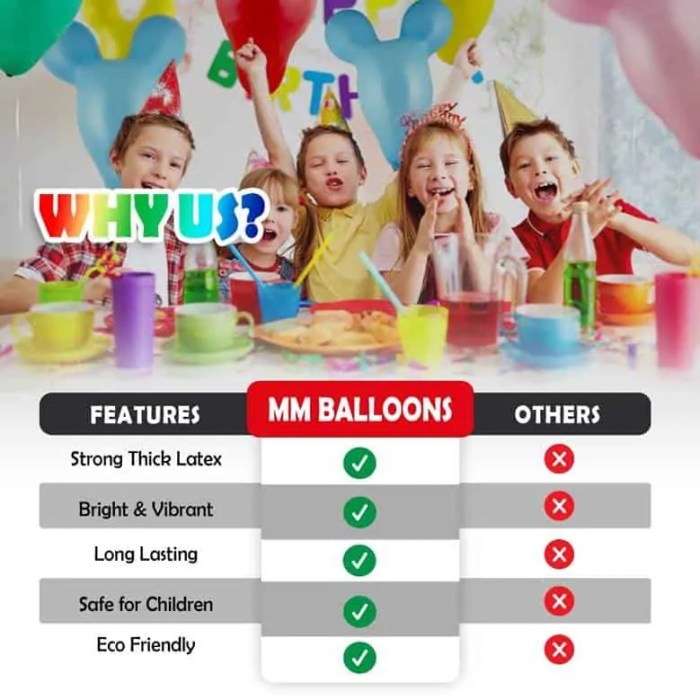
Amazon advertising success hinges on captivating visuals and compelling narratives. Understanding how to leverage both brand-generated and Shutterstock images effectively is key to maximizing ad performance. This section delves into diverse creative approaches for crafting impactful campaigns.Different image types demand tailored creative approaches. Brand-generated images often allow for a stronger connection with the brand’s identity, while Shutterstock images offer a wider range of visual styles and trends.
Effective strategies must consider these differences and leverage each type’s strengths.
Lifestyle Photography for Brand-Generated Images, Amazon advertising performance difference between brand generated images and shutterstock
Brand-generated lifestyle photography effectively portrays the product in use within a relatable setting. This approach humanizes the product and connects it with consumer aspirations. Showcasing a product in a setting that reflects the target audience’s lifestyle fosters a deeper emotional connection. For instance, an image of a family enjoying a meal around a dining table with a new smart kitchen appliance suggests ease and modern living.
Product Demonstrations and Customer Testimonials
Product demonstrations provide clear visual cues of a product’s features and benefits. These demonstrations can showcase how the product solves a problem or improves a user’s experience. Customer testimonials, either written or video, build trust and credibility by featuring real users sharing their positive experiences. A video of a user confidently using a new fitness tracker to monitor their progress is a powerful demonstration.
Such testimonials can significantly impact purchasing decisions.
Creative Ad Copywriting for Shutterstock Images
Compelling ad copy is crucial for enhancing the impact of Shutterstock images. Copywriting should align with the visual cues provided by the image. For example, if a Shutterstock image features a diverse group of people, the copy should highlight inclusivity and a wide range of applications. Using strong verbs and active voice can elevate the impact of the copy.
Visual Storytelling for Enhanced Engagement
Visual storytelling goes beyond showcasing features; it crafts a narrative around the brand’s values and resonates with the target audience. A series of images depicting a journey of a customer finding a solution using the product can create a strong emotional connection. This narrative approach can significantly enhance customer engagement.
Product Features vs. Brand Values
Focusing solely on product features in advertisements can be limiting. Highlighting brand values through visual storytelling can establish a deeper emotional connection with the target audience. For example, an image of a sustainable product being manufactured with recycled materials, coupled with copy that highlights the brand’s commitment to environmental responsibility, creates a stronger connection with environmentally conscious consumers.
Compelling Visuals to Support Advertising Narratives
Compelling visuals must effectively convey the message and reinforce the brand narrative. Images should be high-quality, well-composed, and relevant to the ad’s theme. A clear understanding of the target audience is crucial to crafting visuals that resonate with their needs and aspirations. For example, a high-quality image of a product being used in a vibrant and modern setting conveys a message of innovation and sophistication.
Conclusive Thoughts: Amazon Advertising Performance Difference Between Brand Generated Images And Shutterstock
In conclusion, the optimal choice between brand-generated and Shutterstock images for Amazon ads depends on a multitude of factors. While brand-generated images often foster stronger brand recognition and visual consistency, Shutterstock images offer cost-effective solutions. Ultimately, a successful strategy balances these factors, focusing on target audience relevance, image quality, and a clear understanding of the performance metrics involved.
Careful consideration of cost, time, and the potential impact on brand perception is essential for achieving optimal results.

